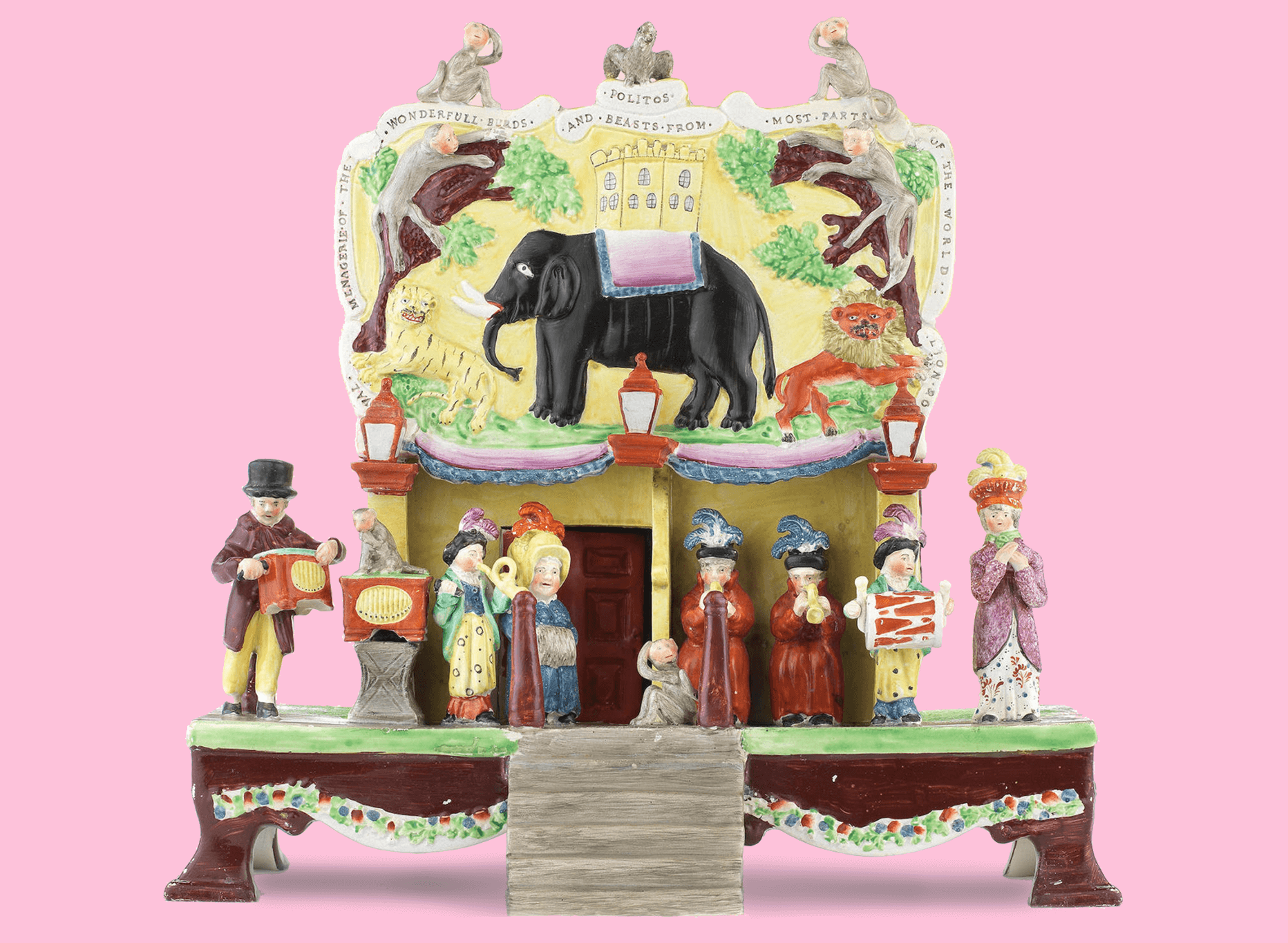Sir Robert Peel
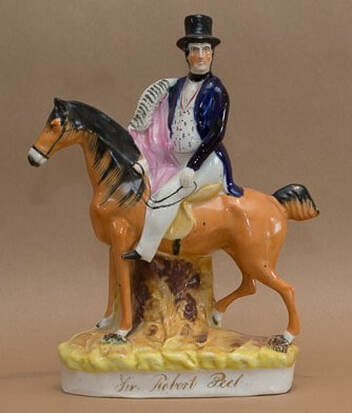
Peel was a British Conservative statesman who served twice as Prime Minister of the United Kingdom (1834-35 and 1841-46) and twice as Home Secretary (1822-27 and 1828-30). He founded the Metropolitan Police Service and was one of the founders of the modern Conservative (Tory) Party.
The son of a wealthy textile manufacturer and politician, Peel was the first Prime Minister from an industrial business background. He entered the House of Commons in 1809 and became a rising star in the Tory Party. When Peel first became Home Secretary, he reformed and liberalised the criminal law and created the modern police force leading to a new type of officer, named in tribute to him as “bobbies” and “peelers”. After a brief period out of office he returned under the Duke of Wellington, also serving as Leader of the House of Commons.

After being in the Opposition (1830-34), he became Prime Minister in November 1834. Peel issued the Tamworth Manifesto, laying down the principles upon which the modern British Conservative Party is based. His first ministry was a minority government and after only four months it collapsed and he served as Leader of the Opposition during Melbourne’s second government (1835-41). Peel became Prime Minister again after the 1841 election. His second government ruled for five years. He played a central role in making free trade a reality and set up a modern banking system. His government’s major legislation included the Mines and Collieries Act 1842, the Income Tax Act 1842, the Factories Act 1844 and the Railway Regulation Act 1844.
More Figures of the month

Rare figure of Victorian card playing
At first glance, this may appear to be an ordinary arbour figure. But upon closer inspection, one can see these three people are engaged in a game of cards.
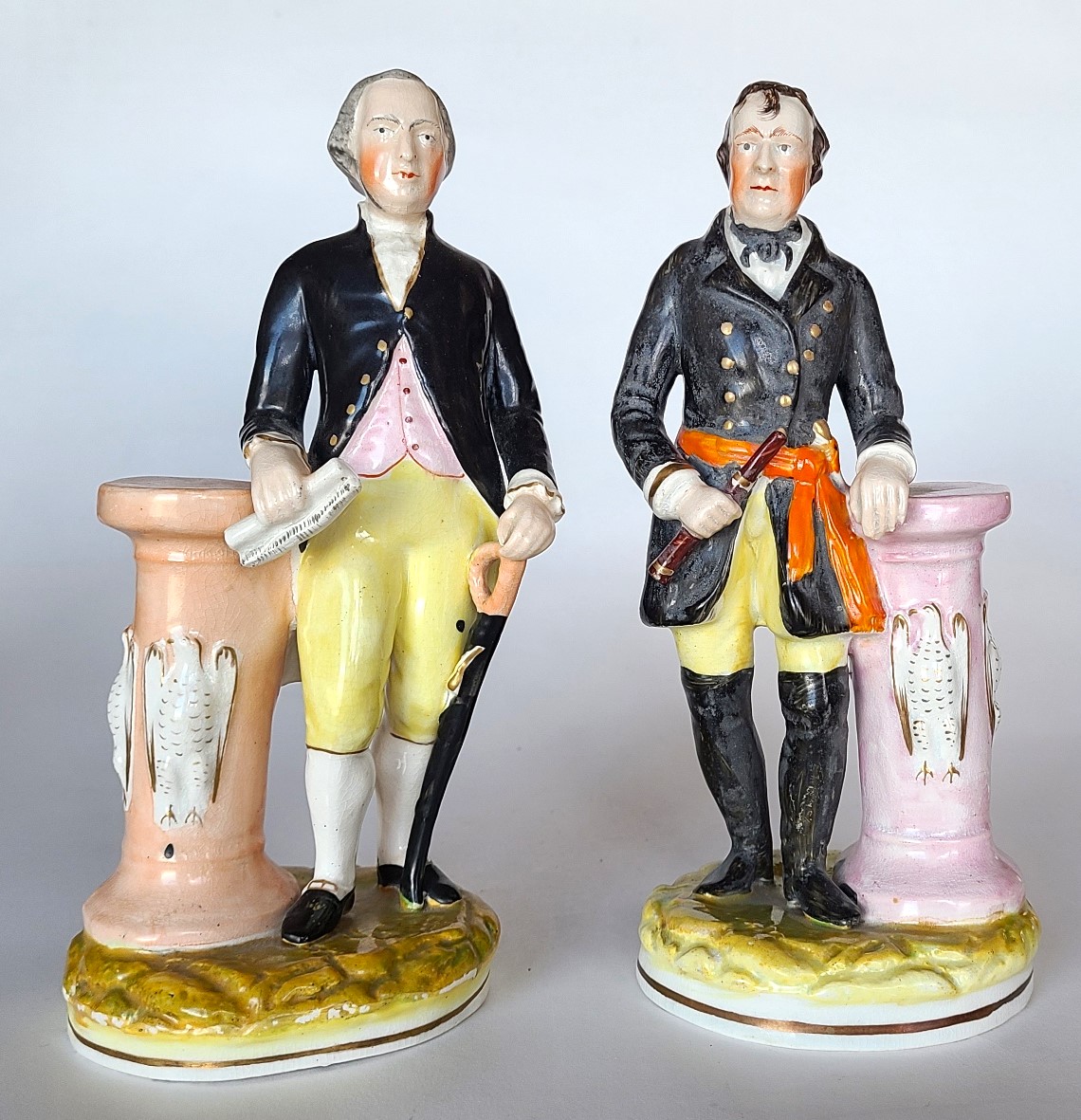
George Washington and Zachary Taylor
This is a very rare pair of figures portraying George Washington and Zachary Taylor. They stand approximately 9” and 9.1″ tall, and date to approximately 1850.
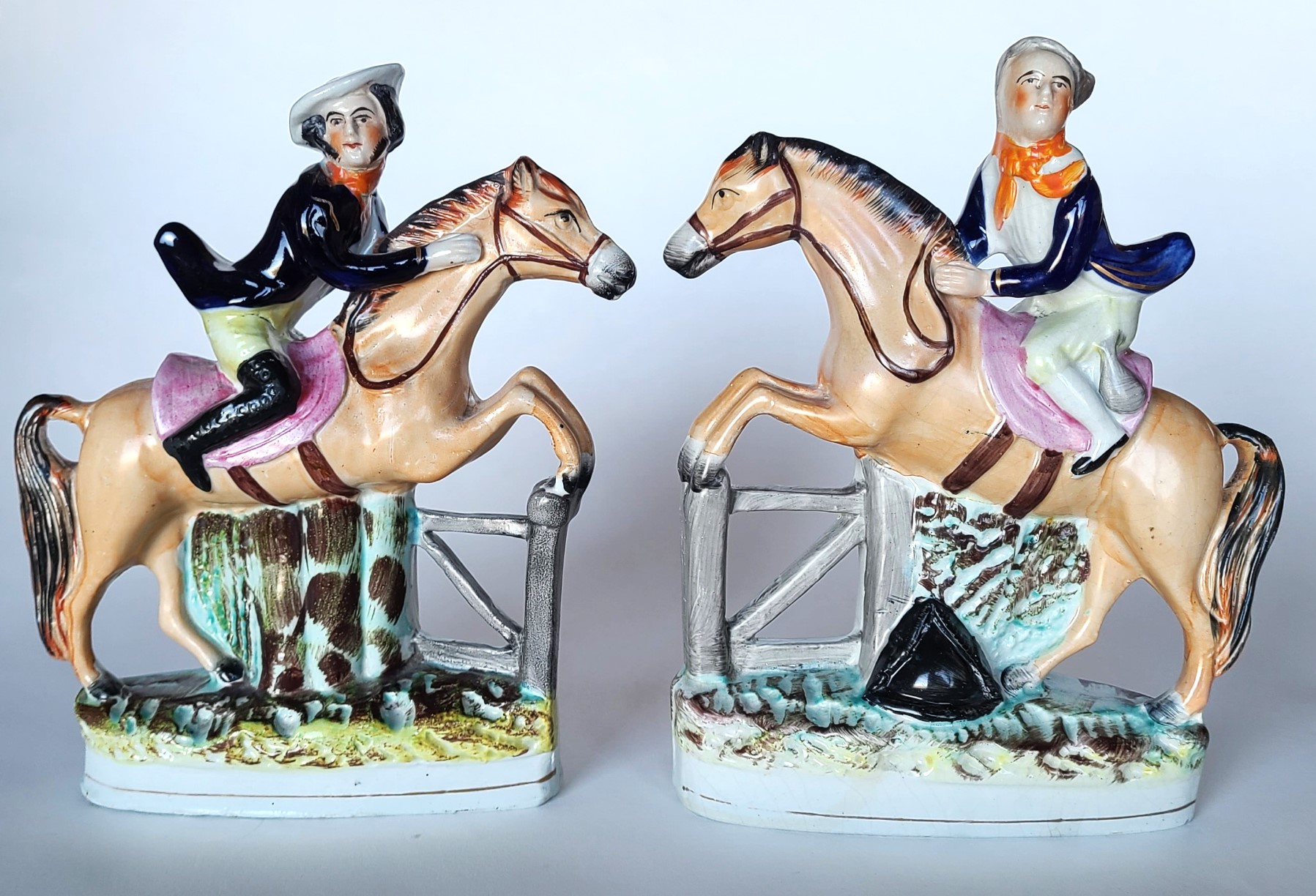
Tam O’Shanter and John Gilpin
This is a very rare pair of figures portraying Tam O’Shanter and John Gilpin. They stand approximately 8.6″ and 9.0″ tall, and date to approximately 1845.
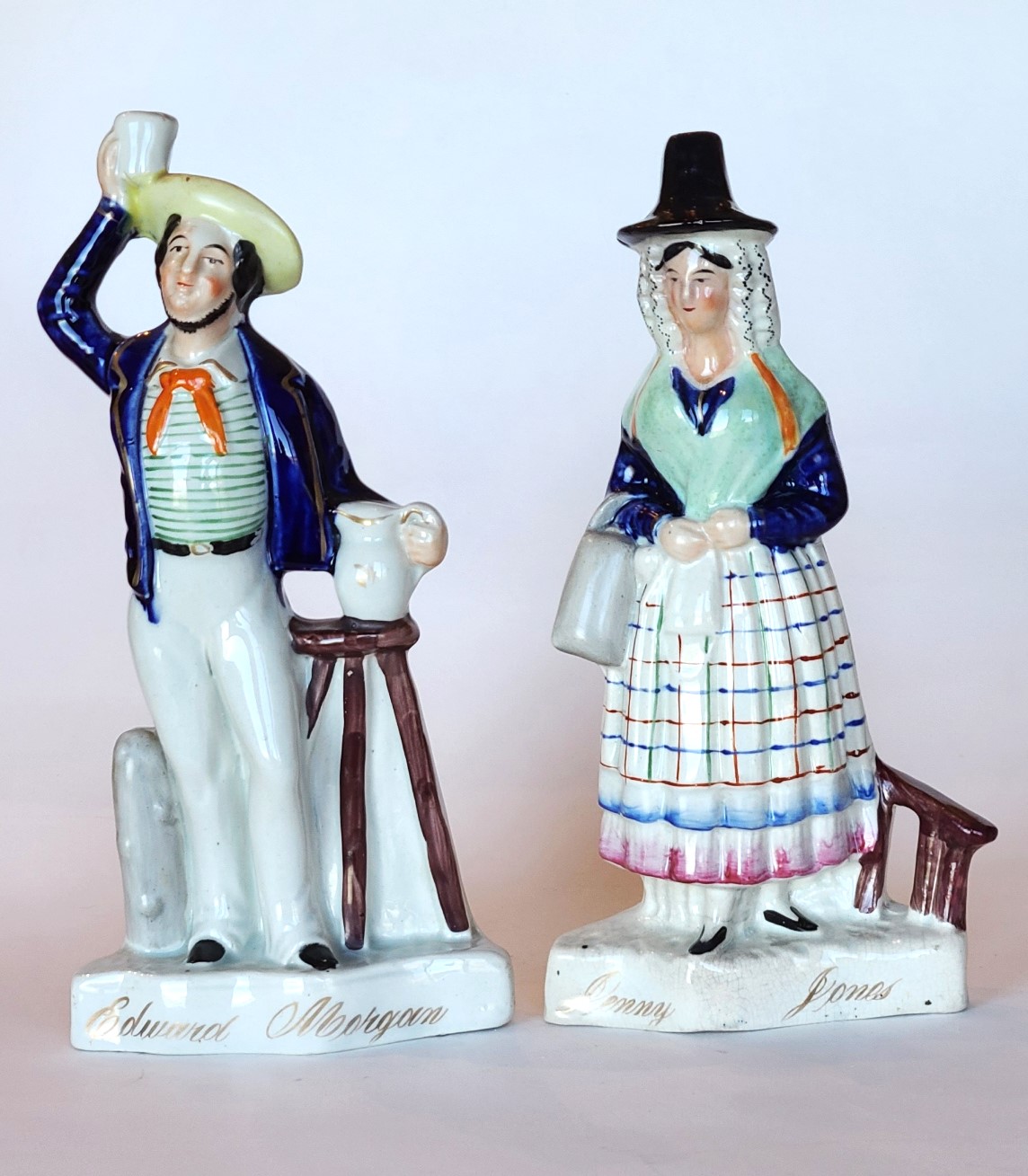
Edward Morgan and Jenny Jones
This is a rare pair of figures portraying Edward Morgan and Jenny Jones, titled with gilt script. The romantic tale of Morgan and Jones was set to music in 1825 by Charles James Mathews.
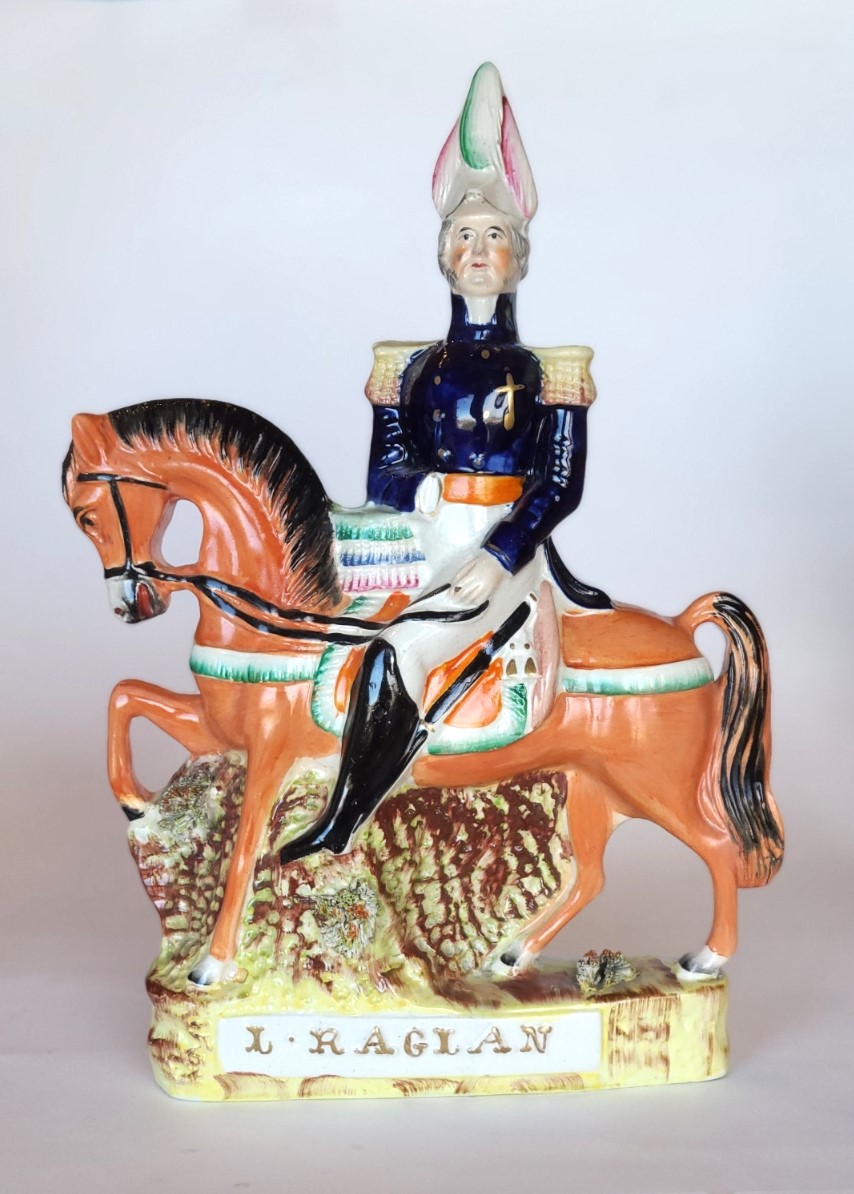
Field Marshal Fitzroy Raglan
This is a rare figure of Field Marshal Fitzroy Raglan. The figure stands about 12 1/4” tall and dates to about 1854.
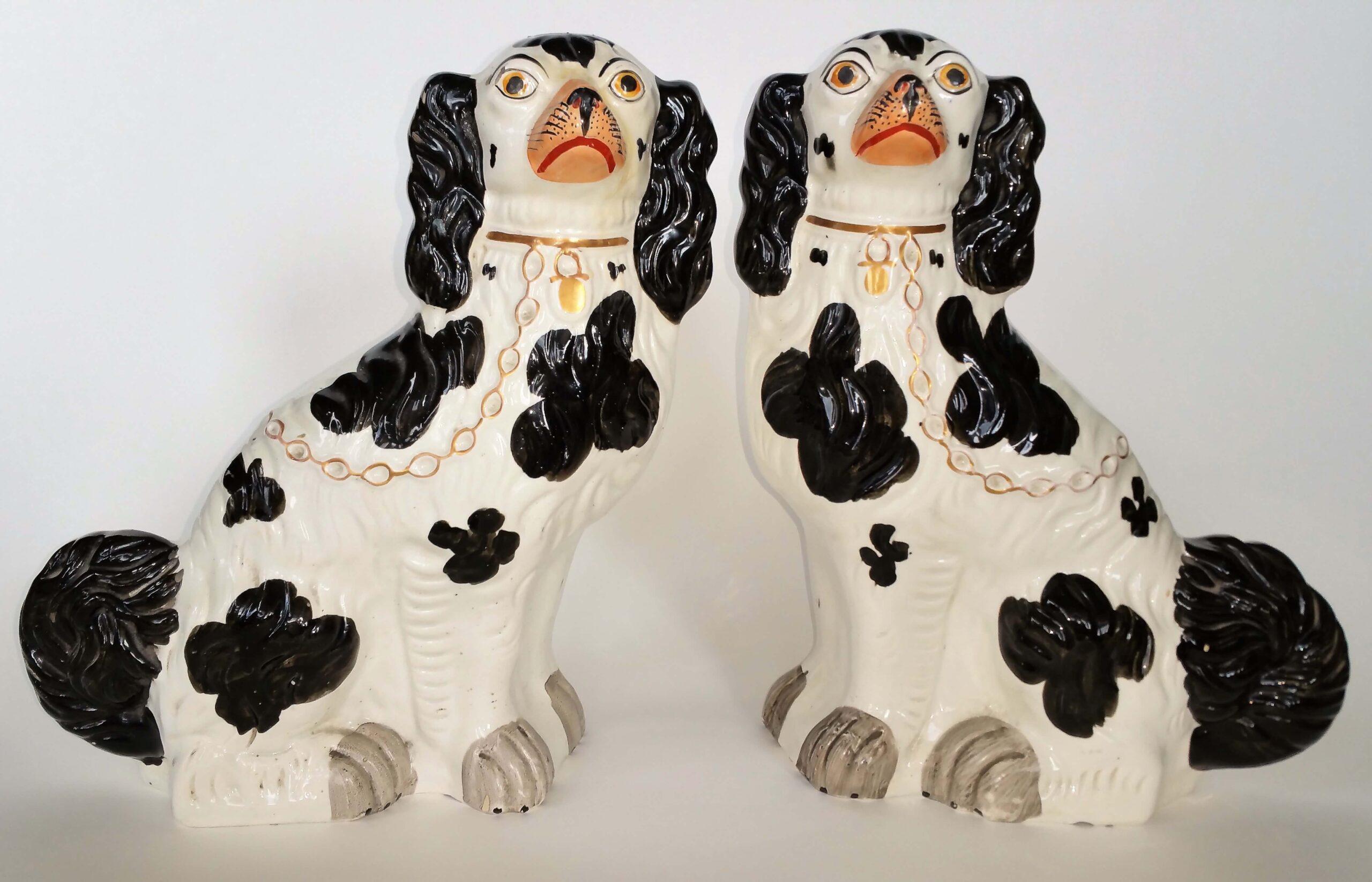
Black and white spaniels
This is fine pair of #1 black and white Staffordshire spaniels. They have a raised number one on the underside, designating them as the largest in a series of six sizes, number six being the smallest.
Membership
We warmly welcome new members – join us for free!
Wherever you are in the world, whether you are an experienced collector, a researcher interested in the folk art of England, or just someone who is intrigued by Staffordshire figures, please join us and get the rest of this year for free! Stay with us next year and pay an annual fee of £45 / $50 per household in January.
